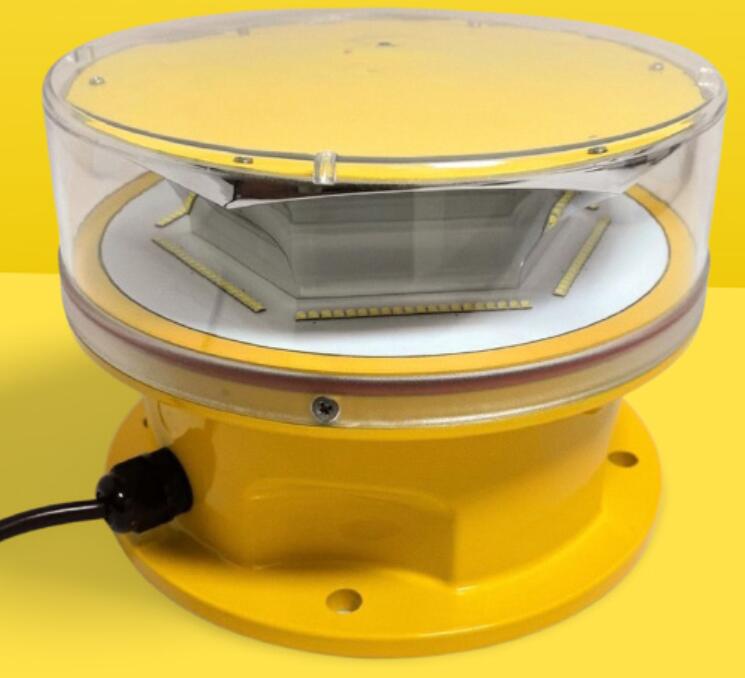Aircraft Warning Light: Essential Guardian of Aviation Safety
In our increasingly vertical world, aircraft warning light systems have become silent sentinels protecting both aviation infrastructure and human lives. These specialized lighting solutions serve as critical visual markers that prevent collisions between aircraft and tall structures, operating 24/7 to maintain safe airspace navigation. This comprehensive guide examines the evolving technology, regulatory landscape, and innovative applications of modern warning light systems.
The Critical Role of Aircraft Warning Lights
Every structure protruding into navigable airspace presents potential collision risks. Aircraft warning light systems address this by:
Providing visible day/night structure identification

Complying with international aviation safety standards
Adapting to various environmental conditions
Supporting both fixed-wing and rotary aircraft operations
| Aircraft Warning Light |
Cutting-Edge Technology in Warning Lights
1. Advanced LED Systems
80% more energy efficient than traditional lighting
50,000+ hour lifespan with minimal maintenance
| Aircraft Warning Lights |
Instant on/off capability with no warm-up period
2. Smart Control Systems
Automatic brightness adjustment for visibility conditions
Remote monitoring and fault detection
Integration with air traffic management systems
3. Sustainable Power Solutions
Solar-hybrid configurations
Energy storage innovations
Self-diagnosing power management
Global Regulatory Framework
Aircraft warning light systems must comply with:
FAA AC 70/7460-1L (US standards)
ICAO Annex 14 (international requirements)
EASA regulations (European compliance)
CASA standards (Australian guidelines)
Key compliance factors include:
Light intensity classifications (L-864, L-810, L-856)
Flash patterns and synchronization
Color specifications and chromaticity
Physical durability requirements
Industry-Specific Applications
1. Urban Infrastructure
Skyscrapers and high-rise buildings
Bridge and tower marking
Construction crane lighting
2. Energy Sector
Wind turbine farms
Power transmission towers
Offshore oil platforms
3. Telecommunications
Broadcast antennas
Cell towers
Microwave relay stations
4. Transportation
Airport structures
Suspension bridges
Mountainous terrain markers
Installation Best Practices
Proper aircraft warning light installation requires:
Strategic Placement
Structure apex positioning
Intermediate level spacing
Obstruction-free visibility
Power Considerations
Primary and backup systems
Surge protection
Energy efficiency optimization
Environmental Adaptation
Corrosion-resistant materials
Extreme weather durability
UV protection components
Maintenance Evolution
Modern systems incorporate:
Predictive maintenance algorithms
Automated failure alerts
Modular component design
Remote diagnostics capabilities
Routine maintenance should include:
Monthly visual inspections
Quarterly performance testing
Annual comprehensive checks
Immediate fault resolution
Emerging Innovations
The future of aircraft warning light technology includes:
AI-powered adaptive lighting
Integrated drone detection systems
Blockchain maintenance records
Space-based monitoring integration
Selection Criteria
When choosing warning lights, consider:
Regulatory Compliance - Verify all required certifications
Environmental Suitability - Match to installation conditions
System Reliability - Proven performance history
Future-Proofing - Upgrade and expansion capability
Manufacturer Support - Technical assistance availability
Aircraft warning light systems represent a perfect marriage of safety engineering and technological innovation. As urban landscapes grow more complex and air traffic increases, these systems will continue evolving to meet new challenges. Modern solutions now offer unprecedented reliability, efficiency, and smart capabilities that go beyond basic regulatory compliance.
For infrastructure owners and aviation authorities, investing in advanced warning light technology isn't just about meeting requirements—it's about actively contributing to global aviation safety. The next generation of aircraft warning light systems will likely incorporate even more sophisticated features, potentially integrating with urban air mobility networks and autonomous aircraft systems. By staying informed about these developments, stakeholders can ensure their installations remain effective and relevant in our rapidly changing airspace environment.
